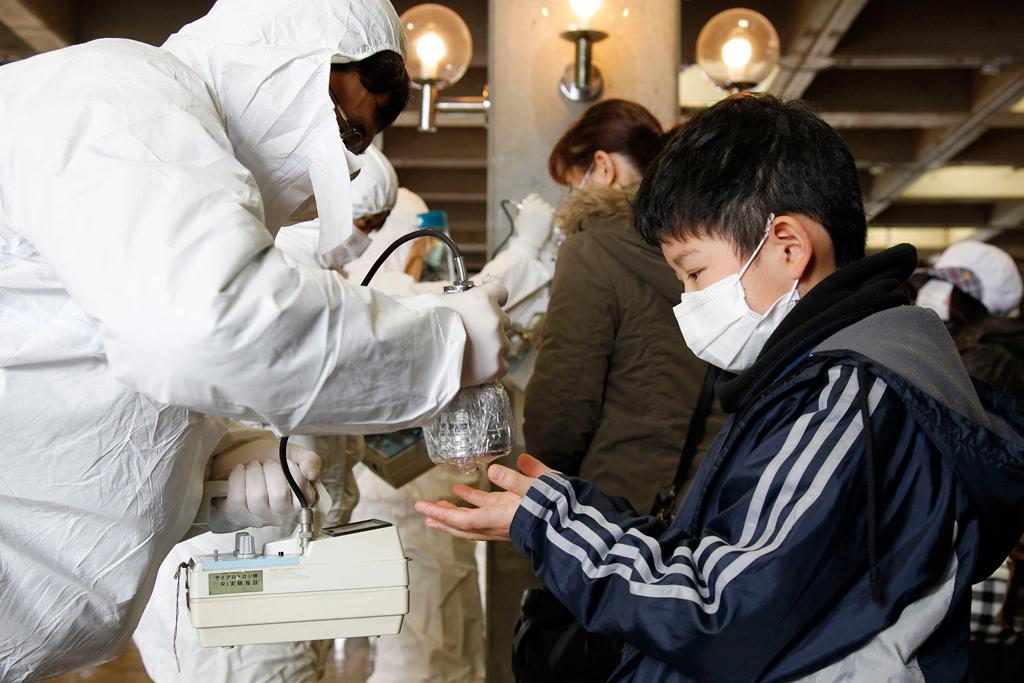Radiation poses newly discovered danger to children in Japan
An official in a full radiation protection suit scans an evacuated boy with a geiger counter to check radiation levels in Koriyama city in Fukushima prefecture.
Small amounts of radiactive substances have been found in urine samples taken from 10 children living in the same region as Japan's damaged nuclear power plant.
The discovery, in Fukushima city, has raised concerns that residents have been exposed internally to radiation from the plant, 60 kilometres away at the coastline.
Tests were conducted in May on the 10 children, aged between six and 16, by a local Japanese group and Acro, a French organisation that measures radioactivity. All 10 tested positive for tiny amounts of caesium-134 and caesium-137, Guardian News & Media reported.
The Japanese government said it was concerned and would examine the results.
The survey found 1.13 becquerels of caesium-134 per litre of urine in an 8-year-old girl — the highest reading for that isotope. The highest reading for caesium-137 (1.30 becquerels) was in a 7-year-old boy.
The discovery came days after health authorities in Fukushima began checking internal radiation doses among all 2 million of the prefecture's residents, a 30-year project that will cost an estimated ¥100 billion ($1.1 billion).
The test results coincided with the government recommending the evacuation of a further 113 families from Date, Fukushima prefecture, after four locations in the area were newly identified as radiation "hot spots," the Telegraph reported.
All those who wished to evacuate the areas would be supported by the government, in particular children and pregnant women, as a result of its status as a "hot spot" — defined as an area in which household radiation levels are estimated to exceed 20 millisieverts a year.
Meanwhile, the operator of Japan's Fukushima Dai-ichi nuclear power plant has said a new contaminant had turned up in water outside the damaged facility's No. 1 reactor, but the company played down the possibility that the finding could signal the escape of additional radioactive material, the Asahi Shimbun reported.
Tokyo Electric Power has battled to prevent radioactive contaminants from escaping the six-reactor Fukushima facility following a March 11 earthquake and tsunami that left more than 20,000 people dead or missing in Japan. Radiation releases on a level not seen since the 1986 Chernobyl disaster have already forced the evacuation of about 80,000 residents from a 12-mile ring around the facility.
